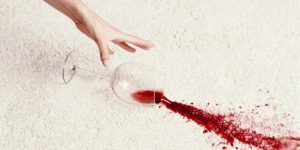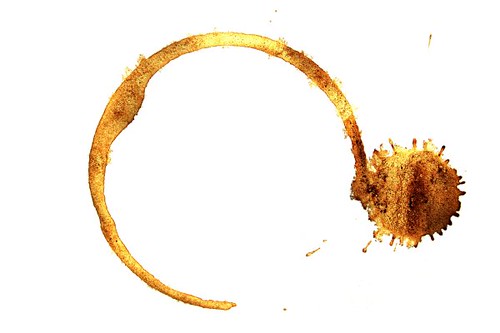
Photo source: https://bit.ly/2vSw3eD
There’s no point crying over spilt milk, or spilt wine, or anything you have spilt in fact. When you have spent a long time decorating your home, and choosing the perfect materials for curtains, carpets, furniture, and more, the last thing you want is for it to become stained.
If you’re battling a tough stain, then don’t panic. Here are some home remedies that will help get even the most stubborn marks out of soft furnishings and walls:
Baby Powder
If you have any oil based stains, then baby powder can work wonders in getting them out. Sprinkle some powder over the stain as soon as you see it, and wait for the powder to soak up the oil. Once the stain is less oily and has risen to the surface it should be much easier to wash out.
Lemon Juice
With its acidic nature, lemon juice can make a good bleaching agent and can help get stains out of any bright white materials. Simply squeeze lemon juice on the stained white fabric and leave it out in the sun for a couple of hours. Wash the item as usual, and the stain should be gone.
Vinegar
If you need your fabrics to brighten up or have tough stains that need soaking, then vinegar can come in really handy. Either put some white vinegar in with your wash, or soak tough stains caused by perfumes or deodorants before popping in your usual wash. Don’t use vinegar on delicate fabrics though, as it is quite strong.
Ironing
Wax can be quite hard to get out of fabrics, and often your tablecloth becomes the victim of a wax stain when one too many candles melt down the side of their holders. Simply place a couple of paper towels over the stain, then iron across the top of them. This will help the wax to melt and transfer onto the paper towels, leaving your tablecloth looking as good as new.
Body Lotion
Surprisingly, body lotion and moisturiser can be very good at getting stains off walls. If you have a child who loves to draw on every wall of the house with crayons, then try using body lotion to remove their artwork. Put some on a soft cloth and rub gently over the marks until they disappear. Don’t rub too hard though, as you don’t want to remove a layer of paint too.
Baking Soda
The great thing about baking soda is that is has so many uses. It can keep your fridge smelling nice, be used to whiten your grout, help remove crayon marks on the wall, and get rid of those tough tea and coffee stains in mugs. It can be made into a paste with a splash of water, or mixed into vinegar to create a cleaning spray.
WD-40
Most famous for fixing squeaky hinges, WD-40 is also a great grease busting stain remover, and can be good for getting out stains like permanent marker pen. Simply spray a small amount of WD-40 onto a cloth, then wipe over the stain. It’s best used on tiles, laminate and hardwood, and should be wiped straight off afterwards using warm water.


